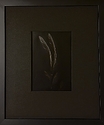There's potentially quite a difference. Additive can be designed more precisely targeted. With subtractive CMY, there can be some white light spillover, potentially contaminating the other paper layers a noticeable amount. That is particularly the case with older subtractive colorheads, or those where some of their dichroic coatings have spalled off due to age or repetitive overheating, allowing more unfiltered, undifferentiated white light through.
And if you open up a subtractive head, you'll see how the amount of filtration of each respective color is dependent upon how much light it intercepts before going into the mixing chamber. That is not the case with additive, where you have separate lamps, each entirely covered with their own respective filter (or in my case, their own 2-filter sandwiched sets, trimming off unwanted nm band width both directions, fore and aft).
Therefore, additive versus subtractive filtration transpires much differently; and how you control the respective output of each color channel differs too. Simultaneous additive systems are harder to design.
Recent LED array innovations potentially simplify the problem.
My additive heads were built during the Cibachome era, with that medium in mind. If you looked at side by side images, additive versus subtractive, the difference is quite obvious in the much cleaner hues and saturation of the additive version. Of course, that is also an esthetic call dependent on which specific image is in play; so I kept both styles of colorheads in use. Ciba also shifted its color balance from greenish fresh to magenta-weighted over, say, six months after opening a fresh box. It was an idiosyncratic but beautiful medium in several respects. Additive printing made it more predictable to control.
Current Fuji RA4 chromogenic papers respond much differently. They have very steeply distinguished spectral sensitivity peaks (although a degree crossover muddiness remains characteristic of most color neg films themselves). Given something like a master color interneg of an appropriately masked original chrome positive, it's feasible to get outstanding color repro, in which case the result from a modern subtractive CMY colorhead is nearly as cleanly saturated as the additive RGB version. (Later Durst and Omega CMY colorheads filtered light better than their earlier equivalents.) There will still be some difference in contrast, with additive having more.
And now, with a highly saturated color neg film itself, namely, Ektar 100, there are times additive printing can be over the top - just too saturated and contrasty - depending on the subject. So now I use additive printing routinely for smaller negatives - 35mm to 6X9, and generally 4x5 too, since the degree of enlargement inherently reduces the contrast somewhat. But on the other hand, now I do most of my 8x10 film RA4 color printing using the conventional Durst CMY 10X10 colorhead instead. That is not as precisely repeatable as my custom 8x10 additive unit; but it doesn't throw the occasional electronics temper tantrums either. That big additive machine has six lamp circuits along with feedback, making it a lot more sensitive to EMI than my 5x7 3-lamp additive system. I won't go into the technical details here. But on the positive side, it runs much cooler than commercial colorheads of comparable wattage. I designed it that way.
The other significant advantage of true additive involves making precise color separation negatives and matching masks, as well as for exceptionally high quality color duplicate chromes, as well as precise internegatives - exceeding the heyday of commercial quality. But that is getting too expensive to do much longer, due to the skyrocketing price of sheet film itself, especially the 8x10 Portra 160 needed for the internegative step. I still sometimes make 4x5 internegs from my stash of old chromes; but for some time now, all my color shooting itself has involved Ektar color neg film of various formats, including 8x10, which can be printed straight onto RA4 print media.










